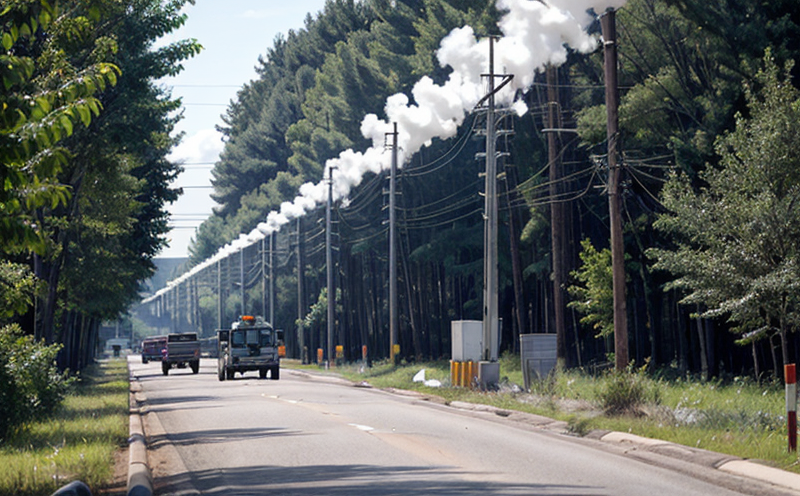ASME PTC 50 Environmental Performance Testing of Utility Plants
The ASME PTC 50 standard is a crucial document that sets forth guidelines for the testing and evaluation of environmental performance in utility plants. This service ensures compliance with international standards, thereby safeguarding the environment while enhancing operational efficiency.
At its core, this test evaluates the emissions and performance parameters of various types of power generation facilities such as coal-fired, natural gas, biomass, and nuclear power plants. The primary goal is to verify that these installations meet stringent environmental regulations set by local, national, and international bodies like the U.S. Environmental Protection Agency (EPA), European Union's Emissions Trading Scheme (EU-ETS), and others.
The testing process involves several key stages: initial site assessment, detailed equipment evaluation, emission measurement using sophisticated instrumentation, data analysis, and finally, report generation. Each stage is meticulously planned to ensure that all parameters are accurately captured and analyzed.
Some of the critical emissions monitored under ASME PTC 50 include sulfur dioxide (SO₂), nitrogen oxides (NOx), particulate matter (PM), carbon dioxide (CO₂), and trace metals. These measurements are essential for identifying potential sources of pollution and implementing corrective measures to minimize environmental impact.
For coal-fired plants, for instance, the focus is on reducing SO₂ emissions through flue gas desulfurization systems. Similarly, in natural gas plants, NOx reduction technologies play a vital role. Biomass plants require stringent controls over PM and trace metal emissions to mitigate air quality concerns.
The testing methodology involves using advanced analytical tools such as Fourier Transform Infrared Spectroscopy (FTIR), Gas Chromatography-Mass Spectrometry (GC-MS), and Portable Emission Measurement Systems (PEMS). These instruments provide precise, real-time data that form the basis of comprehensive reports.
Once all tests are completed, detailed reports are generated outlining the findings. These documents serve multiple purposes: they inform stakeholders about current compliance status; identify areas needing improvement; and guide future operational decisions aimed at reducing environmental impact.
The results of these tests not only help utilities meet regulatory requirements but also contribute significantly to their reputation as responsible corporate citizens. By adhering to international standards like ASME PTC 50, companies demonstrate commitment to sustainability practices which can enhance brand value and attract eco-conscious consumers.
In summary, ASME PTC 50 environmental performance testing is an indispensable tool for maintaining high standards of environmental responsibility within the power & utilities sector. It provides a structured approach to emissions management that benefits both the environment and business operations equally.
International Acceptance and Recognition
The ASME PTC 50 standard enjoys widespread international recognition due to its robustness and applicability across diverse power generation technologies. Many countries have incorporated elements of this standard into their national regulations, ensuring a level playing field for all utilities.
For example, the European Union has adopted several aspects of ASME PTC 50 in its directives on air quality and greenhouse gas emissions. Similarly, China’s Ministry of Ecology and Environment references certain sections when setting emission limits for coal-fired power plants.
This global acceptance highlights the importance of this testing methodology not just within North America but globally as well. It ensures consistency across borders, facilitating smoother international trade in power generation equipment and services.
Moreover, adhering to ASME PTC 50 can open doors to new markets where stringent environmental regulations are in place. Utilities that have already undergone this testing process find it easier to comply with foreign standards without additional modifications.
The standard’s broad acceptance also fosters innovation by encouraging continuous improvement in emission control technologies and operational practices. As more utilities adopt these methods, there is increased pressure on suppliers of equipment and services to innovate further, leading to advancements that benefit everyone involved.
Environmental and Sustainability Contributions
- Emission Reduction: By accurately measuring emissions and providing actionable insights, ASME PTC 50 helps utilities reduce their environmental footprint significantly. This reduction contributes positively to global efforts towards combating climate change.
- Resource Conservation: Through optimized operations based on test results, utilities can conserve valuable resources like water and fuel, contributing further to sustainability goals.
- Economic Benefits: Compliance with ASME PTC 50 standards enhances a utility’s reputation, potentially leading to cost savings through improved efficiency and reduced risk penalties associated with non-compliance.
Competitive Advantage and Market Impact
Adhering to ASME PTC 50 can give utilities a significant competitive edge in several ways:
Innovation Leadership: The rigorous testing process encourages innovation by pushing boundaries of emission control technology. Utilities that invest in staying ahead of these standards are better positioned for future challenges.
Regulatory Compliance: With increasing global focus on environmental issues, compliance with ASME PTC 50 helps utilities avoid costly fines and penalties while maintaining a positive public image.
Market Access: By demonstrating robust adherence to international standards, utilities can penetrate new markets more effectively. This is especially true in regions where stringent environmental regulations are already established or being considered.
Customer Satisfaction: Meeting high environmental performance expectations reassures customers about the reliability and sustainability of their energy supplier, fostering long-term relationships based on trust.





